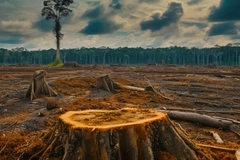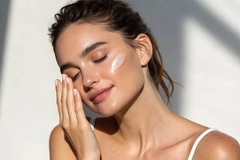Uganda boasts vanilla supply chain resilience with two-harvest capability amid climate uncertainty

29 May 2024 --- Uganda vies for top vanilla exporter status amid challenges confronting key countries such as Madagascar. The Association of Vanilla Exporters of Uganda Limited (Vanex) seeks supply chain diversification, so it is showcasing the benefits of vanilla sourced from a country it hopes can be seen as a dependable supplier.
Cyclone Gamane hit Madagascar two months ago, causing rain, floods and damage to a country that is currently the leading producer of vanilla. According to raw materials distributor De Monchy, the African island’s exports reached 3,000 metric tonnes during the 2021/2022 season. It competes with Comoros, India, Indonesia, Uganda and Papua.
Amid climate uncertainty, Personal Care Insights speaks to Prossy Tumushabe, executive director at Vanex, to learn about Uganda’s vanilla quality and farming process, and how it can benefit the personal care industry.
Vanilla is used in aromatherapy and fragrance-based products such as perfumes and body lotions while also imparting a sweet flavor in lip care products. The plant is also known for its anti-aging and soothing properties that are non-sensitizing.
How can sourcing vanilla from Uganda help beauty brands ensure a reliable supply of this ingredient?
Tumushabe: Over the past few years, the world has learned how drastically supply chain disruptions can impact a company. When beauty companies count on a single origin for their vanilla supply, they’re taking big risks that catastrophic weather, government interference in trade or other unexpected disruptions could leave them scrambling for inventory. Ugandan vanilla’s flavor and aroma profiles match the quality of other prominent origins. As a land-locked country with a free-market-oriented government policy, Uganda can serve the beauty industry as a destination for supply chain stability.  Uganda’s vanilla has a high vanillin content of up to 4.5%, offering a bold flavor with notes of cacao and leather.
Uganda’s vanilla has a high vanillin content of up to 4.5%, offering a bold flavor with notes of cacao and leather.
What makes Ugandan vanilla’s flavor profile unique?
Tumushabe: Ugandan vanilla is known in the industry for its unusually high vanillin content. We have some processors whose beans test as high as 4.5% vanillin [average yield is +/- 2%]. This gives Ugandan vanilla a boldness in aroma and functionality that makes beauty products stand out.
What sustainable practices are used in Ugandan vanilla farming?
Tumushabe: Typically, Ugandan vanilla is grown by small-scale farmers in lush, shaded gardens near their homes as part of a diversified farm system that often includes coffee, bananas and local crops to encourage biodiversity. Uganda farmers don’t typically use chemical fertilizers or clear-cutting. For eco-conscious beauty brands, this means a product offering that matches their values, as well as product stories that resonate with conscious consumers.
How is the consistency and availability of vanilla for the beauty industry benefited by Uganda?
Tumushabe: The equator runs right through Uganda, making it the only vanilla origin with two annual harvests. For companies sourcing Ugandan vanilla, this creates added flexibility when planning purchases compared to other origins where a new crop is available only once a year. It also helps ensure consistent supply, with the impact of any natural fluctuations mitigated by a new crop in both January and July.
What certifications and quality standards does Ugandan vanilla meet?
Tumushabe: Ugandan vanilla quality is renowned as one of the world’s best, offering flavor, aroma and versatility on par with the world’s top origins. Beans are processed in accordance with global standards and are provided in partnership with US and European flavor and fragrance vendors with certifications like organic, fair trade, non-GMO, clean label, kosher and halal.
Ugandan vs. Madagascar vanilla
According to Vanex, Ugandan vanilla imparts a bold flavor with notes of cacao and leather. The same cultivar as Madagascar vanilla is used, ensuring no discernible difference in quality. Additionally, Uganda’s farming practices avoid pesticides, fungicides, tilling and slash-and-burn methods.
 Uganda produces two vanilla crops per year, ensuring a reliable supply.The country’s “landlocked geography” protects crops from destructive weather, ensuring a dependable supply. Additionally, Vanex says Uganda’s open trade policies without government price interference make it an attractive source of vanilla.
Uganda produces two vanilla crops per year, ensuring a reliable supply.The country’s “landlocked geography” protects crops from destructive weather, ensuring a dependable supply. Additionally, Vanex says Uganda’s open trade policies without government price interference make it an attractive source of vanilla.
“Uganda isn’t as well-known in the vanilla industry yet, but it’s emerging as a world-class source,” says Craig Nielsen, VP of Sustainability for Nielsen-Massey Vanillas. “Diversifying the country of origin for vanilla isn’t top of mind for most brands because they haven’t experienced a disruption yet, but expanding to multiple sources is a great way to future-proof supply.”
The Ugandan vanilla industry collaborates with international organizations to enhance vanilla quality and establish Uganda as a premier sourcing origin. They include Vanex, the Ugandan Ministry of Agriculture, Animal Industry and Fisheries, Catholic Relief Services, the Sustainable Vanilla Initiative and the US Department of Agriculture.
Vanex says Uganda exported 250 metric tons of vanilla in 2022 and is equipped to meet increasing demand.
By Venya Patel












